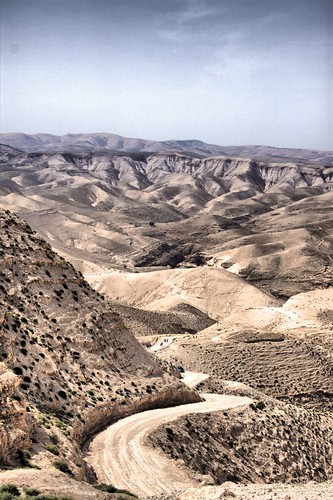© Angela M. Lobefaro
Thanks to gadihext and to his very friendly family for the fantastic hospitality!
The Monastery of St. George clings to the canyon walls like a fairy-tale castle . Of all the monasteries founded in this spectacularly austere area between the 4th and 7th centuries AD, it is the only survivor. The first monks to settle as hermits in the caves in this part of the wadi were named Prono, Elias, Gannaios, Ainan and Zenon (about 420 AD). The monastery itself, dedicated to the Virgin Mary, was founded by St. John of Thebes (about 480 AD) as a spiritual center for the hermits of the region. Supposedly it was built over a cave where Joachin took refuge to lament the infertility of his wife, Anna. An angel told him to return to Anna, who afterward gave birth to the Virgin Mary. In the 6th century AD the monastery became known as St. George under the leadership of George of Koziba.
Born in Cyprus about 550 AD, George lived for a time in Jordan, but later an intense longing for a more ascetic life brought him to the Wadi Kelt. During the Persian invasion of Palestine in 614 AD, the monastery was destroyed and many of its monks were killed. A Greek-Arabic inscription above the old entrance testifies to its reconstruction by Crusaders in 1179. But most of the present monastery dates back to a 1879-1901 reconstruction by the Greek Orthodox Church. The oldest part of the building is the 6th century AD mosaic floor of the neighboring Church of St. John. The skulls of the monks martyred by the Persians are kept here and a niche contains the tomb of St. George.
www.welcometohosanna.com/LIFE_OF_JESUS/wadikelt2.htm
The Beatles - The Long and Winding Road
24 April, 2009
Its a long and winding road
Posted by
Angela Lobefaro
at
2:41:00 PM
![]()
Subscribe to:
Post Comments (Atom)






No comments:
Post a Comment